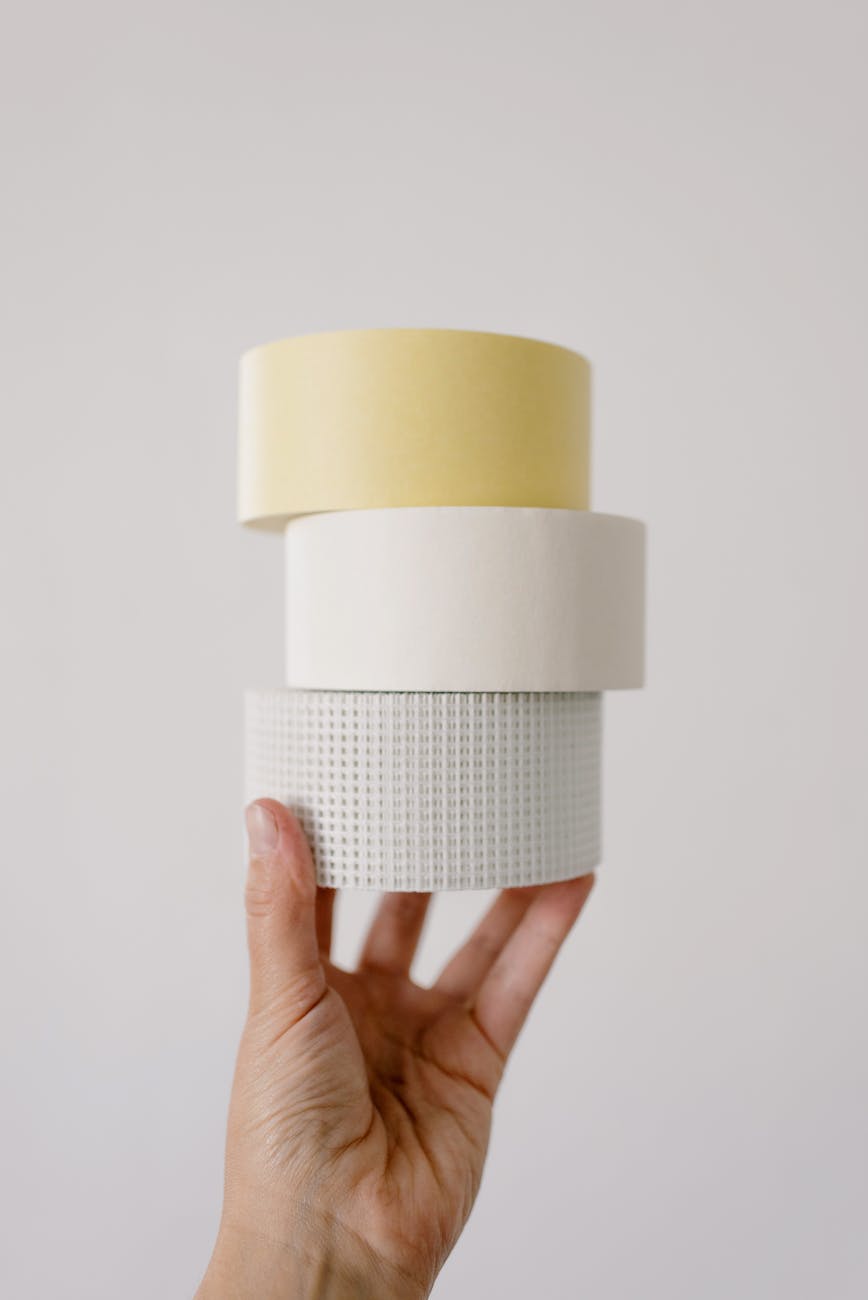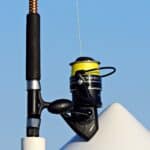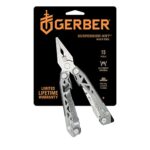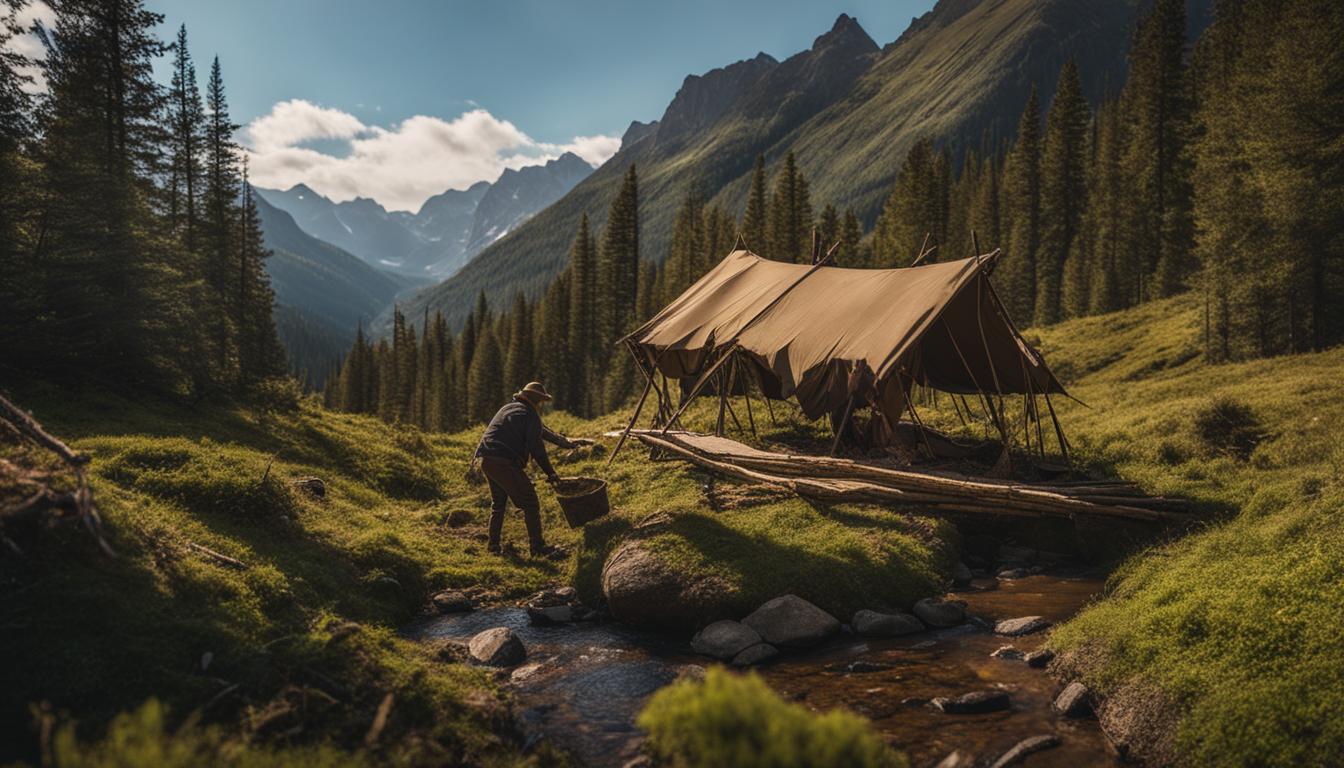If you are passionate about survival, you know that being prepared and knowledgeable is essential for success. Did you know that bandanas are a crucial resource for enduring various situations? With years of experience exploring the wilderness, I can attest that bandanas are incredibly versatile tools in almost any survival scenario!
Let’s take a look at why these little fabric squares should always be kept handy. Not only do they offer convenience and protection from the elements, but with just a few knots and folds – plus some good old-fashioned ingenuity – you can transform them into everything from water filters to emergency first aid kits. And if all else fails, tying one around your head is always a stylish way of keeping out of harm’s way.
For those seeking liberation through self-reliance, there’s no better accessory than a trusty bandana. Read on to find out more about how this versatile piece of cloth can help keep us safe while we explore the world around us.
Definition
Bandanas are the most incredible pieces of survival gear. They’re so versatile and useful, it’s almost as if they were created for a life-saving purpose! But what exactly is a bandana? That’s what I’m here to discuss today – an ultimate guide to understanding everything about this invaluable accessory.
A bandana is simply a large kerchief or scarf that can be worn around your neck, head, or shoulders. It’s typically made from cotton fabric, but you can also find them in silk, polyester and other materials too. The size varies quite drastically depending on where you buy one; some might measure 25 cm square while others could reach up to 90 cm across. In addition to headwear, these cloths often have many practical uses such as cleaning rags and even covering objects like furniture or tools.
In terms of design, bandanas usually feature bright colors and patterns with multiple uses. They come in all sorts of shapes including squares, rectangles and triangles – perfect for creating knots or tying together items securely when camping outdoors. And in case you haven’t noticed yet…bandanas are incredibly stylish too! With their vibrant prints adding personality to any outfit, you’ll never look dull again once you start wearing these bad boys every day.
Uses In Warm Weather
In warm weather, a bandana can be an incredibly versatile survival accessory. First and foremost, it provides excellent protection against the sun’s harmful rays. It can be used to cover your head or neck if you’re out in direct sunlight for extended periods of time. Additionally, they can also serve as insect repellent when soaked with natural oils like peppermint or citronella.
Bandanas are useful for filtering water too – simply tie four corners together and dip them into a lake or stream filled with debris or sediment. You’ll want to make sure that your bandana is absorbent enough to sop up any sweat caused by intense activity in hot climates. Lastly, these accessories provide wind protection when worn around the face or ears when conditions become breezy.
When combined with other items from your survival kit, you have multiple options for staying comfortable and safe during warm temperatures outdoors. With all its uses and versatility, a bandana should definitely not go overlooked!
Uses In Cold Weather
When it comes to cold weather survival, bandanas provide an invaluable resource. As a savvy survivor, you can use them for multiple uses in wintery conditions. From heat retention and insulation tips to wind blocking and protection from the elements – they are truly remarkable accessories that no one should be without! Here are some of their key uses in cold weather:
- Heat Retention: Wrapping your head with a bandana before going outside will help keep body heat inside on those chilly days. It’s also great for keeping warm air around your neck as well.
- Wind Blocking: The tight fit of the fabric helps block out any harsh winds that might be blowing through a campsite or other outdoor location.
- Insulation Tips: A bandana can act as an extra layer of insulation between layers of clothing when temperatures drop below freezing. This is especially helpful if you’re stuck outside overnight or find yourself camping in extreme conditions.
- Winter Protection: Not only does a bandana protect against cold breezes but it also provides extra warmth by trapping heat near your face and head area while protecting sensitive skin from frostbite damage caused by exposure to severe temperatures.
The versatility of this simple accessory makes it an essential piece of gear for anyone who wants to stay safe during winter excursions or activities where you may have limited resources available for staying warm or protected against the elements. With its ability to retain heat and offer protection from the wind, there’s no doubt that wearing a bandana could make all the difference come wintertime! Now let’s cover how best to wear a bandana during these colder months…
How To Wear Bandanas
When it comes to survival situations, bandanas can be surprisingly useful. But what about styling them? There are plenty of ways to wear a bandana for both fashion and function. For starters, you can tie one around your neck in the classic way. You’ll look sleek and stylish while also keeping the sun off your face and neck. Or why not try wearing a bandana as a headband or wristband? This is perfect if you need an extra layer of warmth or protection from dust and debris.
You don’t have to stick with the basic styles either! Get creative by tying two together like a bow-tie or scarf. You can even use multiple colors to create interesting patterns and looks. And if you want something more functional, consider wrapping several around your leg before heading out into rough terrain! With these tips, you’re sure to find some trendy yet practical bandana trends that will keep you safe and looking great during any outdoor adventure.
Choosing The Right Fabric
When it comes to choosing the right fabric for a bandana, you want something that is lightweight and durable. It should be able to handle whatever situation arises in your survival kit. There are many different types of fabrics available, from cotton to wool and even synthetic materials, so it can be overwhelming trying to decide which one is best for you. However, there are some characteristics and features of each type of fabric that make them ideal for use as bandanas.
Cotton has long been considered one of the most versatile fabrics when it comes to using it in clothing or accessories like bandanas. Cotton is strong, breathable, and easy to care for. Additionally, its natural fibers allow air circulation while still providing excellent insulation against both heat and cold temperatures—a must-have feature if you’re going out into the wilderness!
Wool is another great choice due to its water-resistant properties and ability to provide warmth without feeling too bulky or heavy on your neck. Wool also offers superior protection against windy conditions thanks to its tight weave structure; this makes it great for outdoor activities such as hiking or camping trips where you need extra protection from the elements. Plus, wool can last for years with proper maintenance!
Synthetic fabrics have become increasingly popular over time because they offer advantages such as being lightweight yet incredibly strong at the same time. They are more resistant to wear and tear than other materials like cotton or wool, making them better suited for hikes or backpacking journeys where weight might be an issue. Synthetic fabrics come in a variety of colors and textures so you can choose what works best with your outfit or environment.
No matter which fabric you choose, remember that all fabrics have their own unique characteristics and features that make them suitable for various uses within a survival kit. Take some time to explore these options before selecting one that will work best with your needs—you won’t regret taking this step! With careful selection based on quality material choices combined with thoughtful planning ahead of time, you’ll find yourself well prepared no matter what mother nature throws at you next.
Making A Bandana Part Of Your Survival Kit
Now that you’ve chosen the right fabric for your bandana, let’s make it part of your survival kit. A well-stocked survival kit should include a bandana, as they are versatile and can be used in various ways to help you stay alive in any situation.
A multi-purpose item like this is essential for anyone who wants to be prepared for whatever life throws at them. Your bandana will come in handy when faced with extreme weather conditions such as hot or cold temperatures; it can also provide protection from wind and rain. With just one simple accessory, you can keep yourself safe from the elements while out on an adventure!
Your bandana will also help protect you if you ever find yourself in a dangerous situation where there is risk of injury or infection. You can use it to cover wounds and absorb blood, apply pressure to stop bleeding or wrap around splints if needed. Bandanas are lightweight and easy to carry, so having one nearby could save your life in certain emergency situations.
In short, investing in quality materials for your bandana kit is key – not only does it add value to your survival gear but more importantly it gives you peace of mind knowing that you have something reliable to rely upon if things take a turn for the worse. Crafting with bandanas doesn’t need to be complicated either; all it takes is some creativity and imagination to transform them into useful tools!
Crafting With Bandanas
Bandanas are an incredibly versatile material for crafting. With a few simple steps, you can turn these colorful fabric squares into useful tools to help you in the most unexpected situations. Here’s how:
| Sewing | Dyeing | Folding |
|---|---|---|
| Hemming | Tie-dye | Headband |
| Basting | Colorfast | Bandage |
| Repair | Natural dyes | Sling |
Sewing bandanas is one of the quickest and simplest ways to make them more durable. You can hem the edges with a needle and thread to prevent fraying or baste patches onto them if they become torn or ripped. Even basic repair work like sewing buttons on shirts or pants can be done using a bandana as well!
Dyeing your bandanas can also add extra life and color to them. Use tie-dye kits or colorfast dyes that won’t wash out when exposed to water for best results. If you’re feeling adventurous, natural dyes made from plants and fruits such as turmeric, beetroot juice, avocado skins, and onion peels can give your fabrics some beautiful earthy tones.
Folding your bandanas correctly is essential in order to unlock their full potential! They’ve been used historically as headbands, slings for carrying items around camp, even makeshift bandages in times of need – all thanks to clever folding techniques. Have fun experimenting with different folds until you find what works best for your particular situation!
By mastering these three crafts — sewing, dyeing, and folding — we’ve just scratched the surface of what’s possible with a humble piece of fabric like a bandana. Next up? We explore ways to use bandanas as signaling devices – stay tuned!
Ways To Use Bandanas As Signaling Devices
Bandanas make for great signaling devices in survival situations. They can be seen from a long distance and help you get the attention of those searching for you or trying to find your location. In cold weather, they can also provide additional warmth when used as head coverings.
In warm weather, bandanas can keep sweat out of your eyes by absorbing it quickly. You might even tie them together with other items to create larger flags that will be easier to spot from a greater distance. Get creative! With some imagination, there’s no limit to what kind of signals you can send using bandanas.
When used correctly, a bandana is an essential tool that could potentially save your life in any number of outdoor scenarios. The bright colors naturally attract attention and its versatility makes it perfect for crafting unique solutions on the fly. Moving forward into the next section we’ll take a look at how to clean and maintain bandanas so they remain effective tools during future adventures.
How To Clean And Maintain Bandanas
Cleaning and maintaining bandanas is as easy as rolling a stone downhill. By following these simple tips, your colorful bandana can continue to be an indispensable tool in any survival situation. When it comes to cleaning your bandana, the first step is always hand washing. Avoid machine washing, which may cause fading or shrinkage of fabric. Use warm water and mild detergent for best results. Be sure to rinse thoroughly until all soap residue has been removed before air-drying flat on a towel away from direct sunlight. To maintain the integrity of its color and shape, ironing with medium heat while damp will also help keep your trusty bandana looking new.
When not being used outdoors, store your bandana in a dry place such as a drawer or closet shelf so that dust does not accumulate on it over time. If you’ve got additional dirt buildup after using it for outdoor activities like hiking, use a brush with soft bristles to gently remove excess soil without damaging the fabric’s fibers. Finally, though many people overlook this important step when caring for their clothing items, regular patch repairs are essential for keeping up the quality of your beloved bandana throughout its lifespan! With proper care and maintenance instructions followed diligently, you’ll be able to make full use of your rugged accessory no matter how far out in the wilds you go.
Creative Ideas For Using Bandanas
Bandanas are an underestimated accessory in many survival situations. They can be used for a variety of tasks and serve as the perfect item to pack when heading out on any outdoor adventure. Here are some creative ways to use bandanas:
- Make a Bag: Bandanas make excellent bags that you can use for carrying smaller items like snacks, water bottles or first aid supplies. Simply fold your bandana into a triangle shape and tie up each side with string or twine to form a pouch.
- Create Signals: Tie brightly colored bandanas around branches to create visual signals for rescuers if you become lost outdoors. This is also an easy way to mark trails so you don’t get turned around during your journey!
- Fashion Accessories: Get creative with how you wear your bandana by tying it around your neck, head or even waist. You can even customize them with designs such as polka dots, stripes or chevron patterns using fabric paint or markers.
- Makeshift Towel/Napkin: Need something absorbent? A wet bandana makes a great makeshift towel or napkin that you can use after meals while camping or hiking.
The possibilities are endless when it comes to getting creative with your bandana usage in various scenarios – from crafting projects to providing protection from sunburns and wind burns. With just one piece of fabric, there’s no limit to what you can do! It’s important to remember that this versatile item should always be part of the essential gear list when planning any outdoor activity.
Frequently Asked Questions
What Is The Best Way To Store A Bandana?
Storing a bandana properly is an important part of any survivalist’s planning. A well-stored bandana can make all the difference in an emergency situation, so it’s essential to know how best to store them. Whether you’re preparing for long-term travel or just stocking up your home first aid kit, here are some tips on storing bandanas for optimal care and preservation.
Take the case of John, who was caught off guard by a sudden storm while camping with his family. When things got rough, he had no choice but to rely on the few items that he had stored away in his bag – including several rolled up bandanas which were tucked securely into their own pocket. By taking the time to organize and store these bandanas correctly prior to leaving on his trip, John was able to access them quickly when needed, saving himself from potential danger.
Here are some top tips for storing bandanas:
- Store your bandanas separately; avoid putting other items directly on top of them as this could cause damage over time.
- Roll each one tightly around its center before folding it lengthwise multiple times until it’s small enough to be secured within its own pocket or pouch. This will help prevent wrinkles and maintain the shape of the fabric longer.
- Place natural materials such as cedar chips or lavender between layers of folded bandanas to keep moths at bay and preserve their color over time.
As experienced survival experts know all too well, proper storage is key when it comes to taking care of your gear – especially if you plan on using it in harsh environments like deserts or jungles where dust and extreme temperatures can wreak havoc on even the most durable fabrics. If handled correctly and stored carefully, your trusty bandana can last for years without losing its functionality or appearance – ensuring that you stay prepared no matter what life throws your way!
How Long Will A Bandana Last?
When it comes to a bandana’s life expectancy, there are several factors at play. How often you use the bandana and its durability will determine how long your bandana can last. If you’re looking for an accessory that has great shelf-life and will remain in top condition under harsh conditions, then investing in a high quality bandana is essential.
As a survival expert, I believe having access to reliable resources is key when planning ahead for any situation. This includes selecting the right materials: one with superior endurance so it lasts as long as possible. When searching for a dependable bandana, look out for features such as natural fibers like cotton or linen which tend to be more durable than synthetic fabrics. Additionally, durable stitching and reinforced edges help make sure your bandana stands up to wear and tear over time.
Moreover, proper storage of the bandana is also important if you want to extend its lifespan even further. Keep it away from direct sunlight whenever possible and store it in a dry place free from dust and other debris – this way your trusty accessory won’t get damaged easily and can be used multiple times down the line!
Overall, by taking care of your bandana properly you can rest assured knowing that it’ll stay with you through thick and thin no matter what unexpected challenges come your way – giving you all the assurance and confidence needed during difficult times!
Is It Better To Have Multiple Bandanas Or Just One?
When it comes to stocking up on essential survival supplies, bandanas often get overlooked. But did you know that with proper storage and use, one bandana can last for years? With their versatility and strong fabric, they’re an invaluable asset in any bugout bag. So when deciding between having multiple bandanas or just one, there are a few things to consider.
For starters, the lifespan of your bandana depends on how well you store it and how frequently you use it. If stored properly – we recommend keeping them away from sharp objects and extreme temperatures – then even after many uses, a good-quality bandana will remain intact for quite some time. In fact, according to research conducted by Adventure Gears Lab, certain types of bandanas have been known to last more than ten years!
Having multiple bandanas gives you plenty of flexibility in terms of tying methods and styles as well as accessorizing options. Multiple colors also come in handy since each color can serve different purposes; such as red being used for medical emergencies or green being used while hunting or camping in nature. Additionally, if you’re out exploring remote areas where you may need water filtration or shelter building materials like rope or firewood transportation – multiple bandanas give you the chance to carry heavier loads without compromising functionality or comfortability.
No matter what type of outdoor activities you engage in, knowing how to tie a basic knot is key – especially when using only one bandana versus two (or more). While wearing multiple does provide extra security against breakage due to weight distribution over several squares, tying techniques become more important when relying solely on one piece of material for tasks like carrying heavy items safely across long distances. All said and done though – whether opting for one powerful multifunctional tool or several highly specialized ones – ultimately comes down to your own individual needs and preferences when planning ahead for any kind of wilderness adventure.
Are There Any Other Uses For Bandanas Beyond Survival?
Are there any other uses for bandanas beyond survival? Absolutely! Bandanas are incredibly versatile and can be used in a variety of ways. In fact, they have become so popular that many people consider them to be an essential fashion accessory. Not only do they add a touch of style to any outfit, but they can also serve as decorations or even works of art.
When it comes to using bandanas as fashion pieces, the possibilities are endless. You could tie one around your neck, wear one on your head like a headband, or use it to accessorize nearly anything in your wardrobe. There is no limit to what you can create with a simple bandana! If you’re feeling extra creative, you could even sew several together and make yourself a unique dress or top.
Bandanas can also be used for decorating purposes – from wall hangings to pillows and throws. And if you’re feeling crafty, why not try making things out of them? From jewelry and bags to dream catchers and wreaths – these colorful accessories can bring life into virtually any room! With just some basic supplies such as fabric glue, scissors, thread and beads – the sky really is the limit when it comes to crafting with bandanas.
So while most may think of bandanas solely as useful tools in times of emergency – their potential goes far beyond this idea alone. Whether you’re looking for something stylish to spruce up your look or trying to find new ways of adding color and character into your home décor – reach for a trusty bandana!
Are There Any Special Techniques For Tying Bandanas?
Bandanas are incredibly versatile and can be used for far more than just survival. One question that arises often is: Are there any special techniques for tying bandanas? The answer is a resounding yes! With their unique properties, bandanas allow us to employ various tying techniques, creating useful knots and other helpful applications in almost every survival situation.
From practical survival knots like the Square or Sheet Bend Knots to decorative styles such as the Bandana Bow Tie, these fabric strips offer endless possibilities. There’s no need to be intimidated by all of the different knotting options – with some practice you’ll soon master them all! Whether it’s securing a shelter or constructing an emergency splint, mastering the art of bandana tying could make all the difference between life and death in extreme situations.
Learning how to tie a variety of bandana knots gives us freedom from panic and chaos when things get tough out in the wilderness. It’s empowering knowing we have this skill at our disposal should disaster strike. Knowing which knot works best for each task allows us to quickly adapt to whatever environment we may find ourselves in. So why not give yourself peace of mind by brushing up on your knowledge of bandana-tying techniques today? Who knows – one day you might save yourself from an unfortunate predicament with those newfound skills!
Conclusion
In conclusion, bandanas are an invaluable tool for any survival situation. They can be used in a variety of ways to help keep you safe and secure which is why I always recommend that people carry one with them during their outdoor adventures. Whether it’s keeping the sun out of your eyes, creating shelter or even as a makeshift stretcher, having at least one bandana on hand could potentially save your life.
But more than just being useful tools, they also serve another purpose: they remind us all of the resilience we have within ourselves to overcome difficult situations. Like how a bandana can take on many shapes depending on how it’s tied, so too can our lives come together into something unique and meaningful no matter what hardships we face along the way. So next time you go off exploring outdoors, don’t forget to bring a bandana—just in case!



















